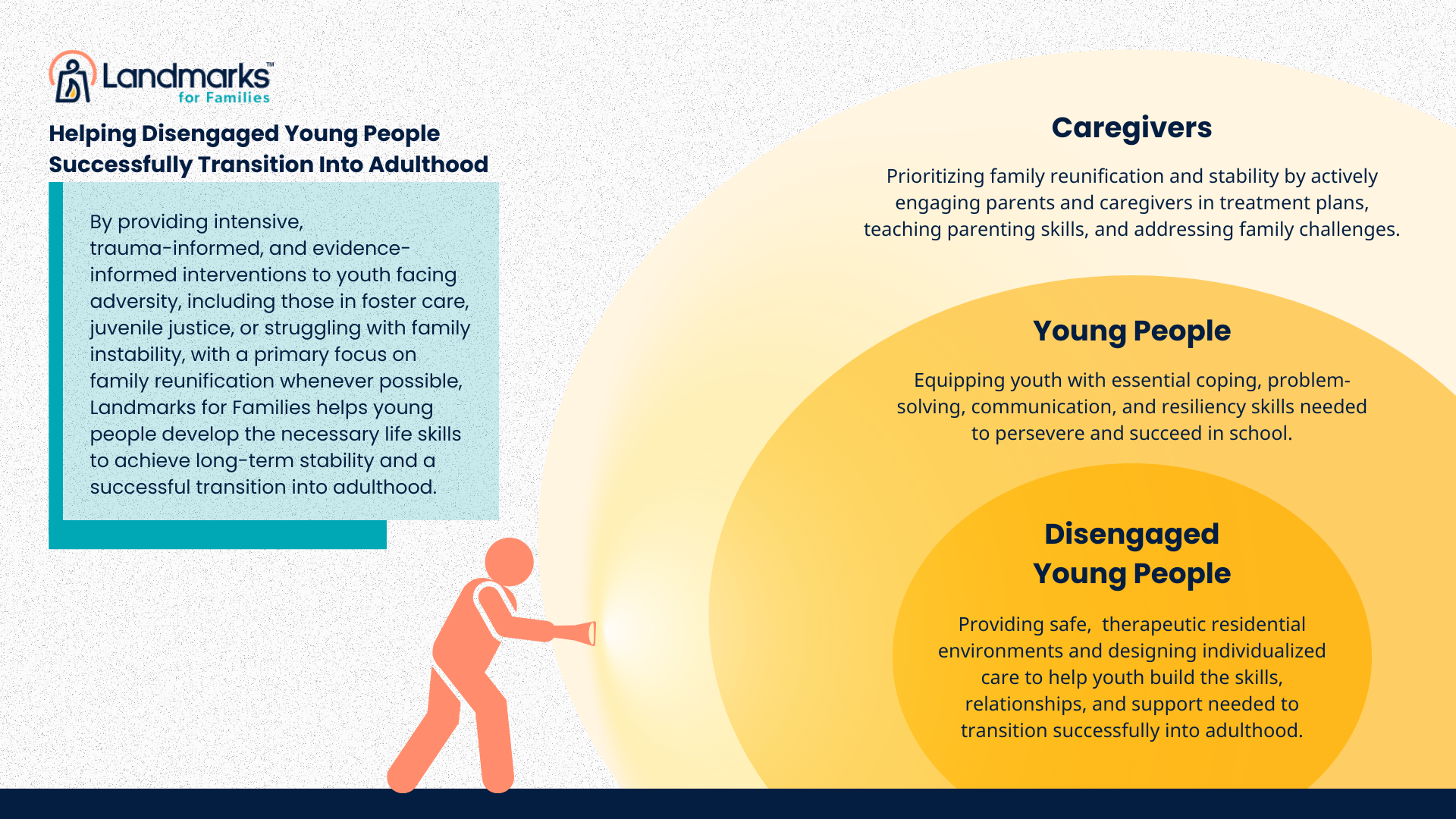Helping Audiences Understand the Work and Its Intended Impact
with Landmarks for Families
Overview
Landmarks for Families provides support for young people and families facing significant challenges. Their service model, focused on family reunification whenever possible, is both robust and nuanced, grounded in trauma-informed principles and an evidence-based approach.
Their existing logic model used technical language and assumed familiarity with their methods, making it difficult for others to quickly grasp the essence of their work.
Organizational leaders partnered with Back of the Napkin to reimagine how their model could be visualized and communicated, so it clearly conveys the depth of their approach and helps audiences understand and want to engage with the organization.
Project Objectives
Design a visual theory of change and supporting materials that would:
Simplify complex, technical descriptions of services into a format accessible to community members, partners, and funders.
Highlight the unique focus on disconnected young people, while still reflecting the range of populations served.
Create a visual model that sparks curiosity and invites engagement.
Preserve the depth and sophistication of Landmarks for Families’ trauma-informed, systems-based approach.
The Solution
Our work began by listening to what the team needed most: clearer ways to describe their work, tools that could connect with multiple audiences, and a model that reflected both the heart and rigor of their approach.
We reviewed existing materials and looked at how peer organizations communicate complex systems without losing what makes them unique. Those insights informed a collaborative workshop with program leaders, where we explored two ways to frame the story: through who Landmarks serves, or through how their services are delivered.
The team chose to focus on the people they serve because it more quickly differentiates them from other organizations, anchors understanding in their mission, and makes the work easier for external audiences to grasp.
We co-designed a visual that shows how support varies by need. Using light as a metaphor, the design shines brightest at the center, representing the deep investment in young people receiving the most intensive services, and radiates outward to show the breadth of support offered to families and the wider community.
The result balances focus and reach, helping the organization clearly communicate who they are, what they do, and the impact they aim to make.
The Result
Landmarks for Families gained a clear, audience-focused Theory of Change that makes their work easier to understand—without losing the nuance that defines it.
The new framework helps them:
Highlight their primary focus on disconnected young people while reflecting the range of populations they serve.
Show how services adapt to meet distinct needs and create meaningful value for youth and families.
Use language that resonates across audiences, opening the door to more engaging conversations with partners, funders, and the community.
“Back of the Napkin offered the fresh perspective we needed to lift us out of the temptation to rely on “industry jargon” and help us communicate our value and impact in a way that I believe will help us resonate with a much broader audience. ”
— Beverly Hardin, Chief Executive Officer, Landmarks for Families
Ready to clarify your program impact and
align your team?
Book a free consultation to see how our hands-on approach breaks down barriers, reveals hidden strengths, and creates genuine collaboration across departments.





